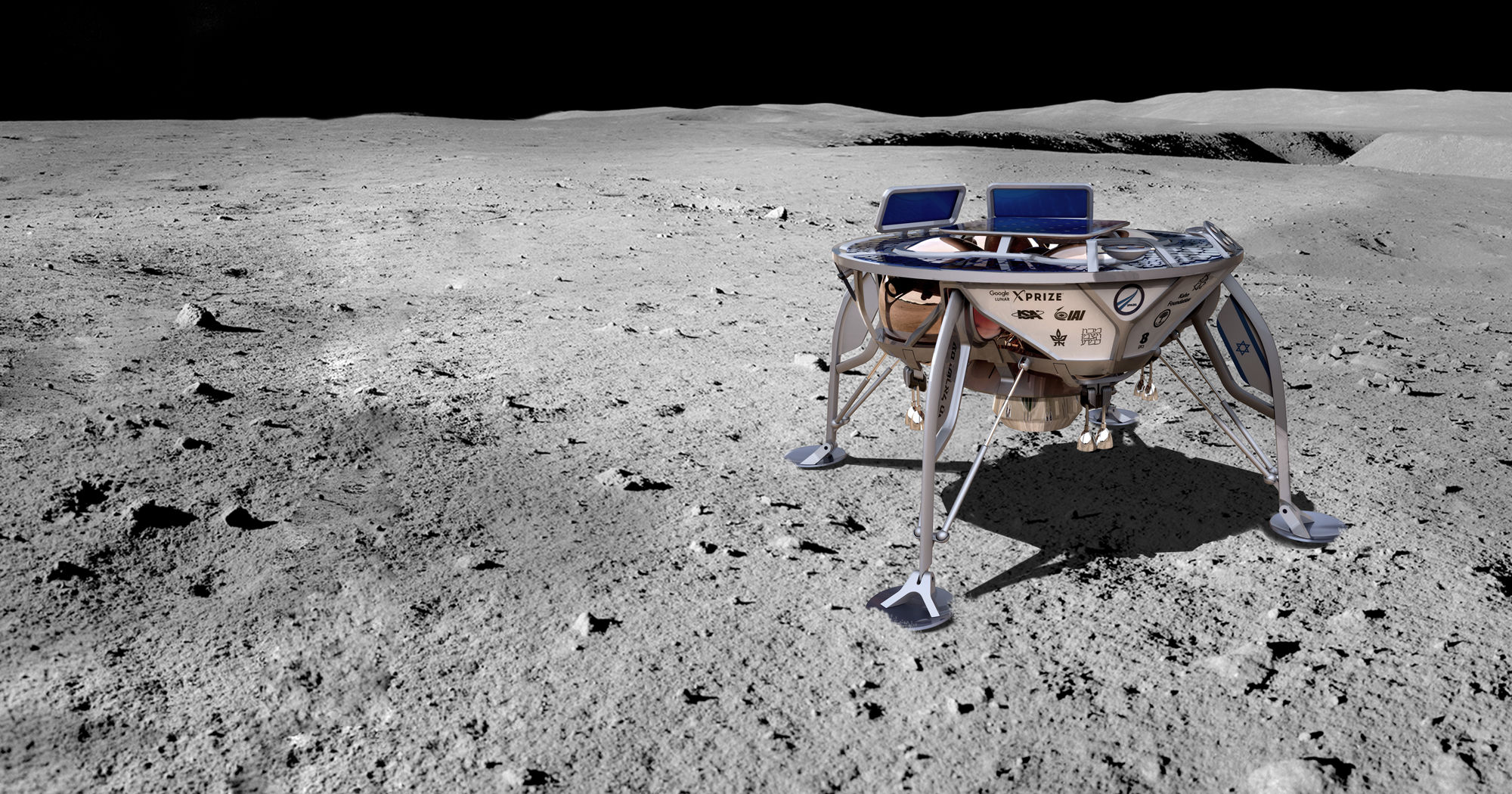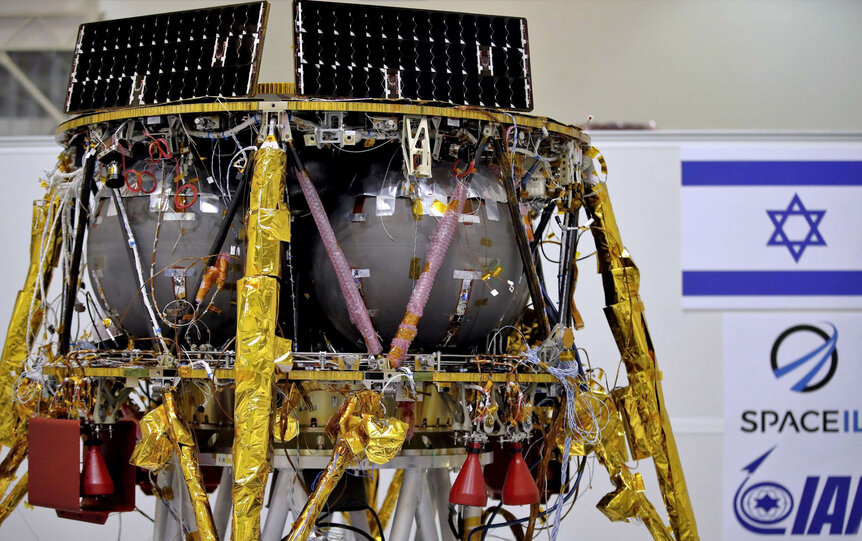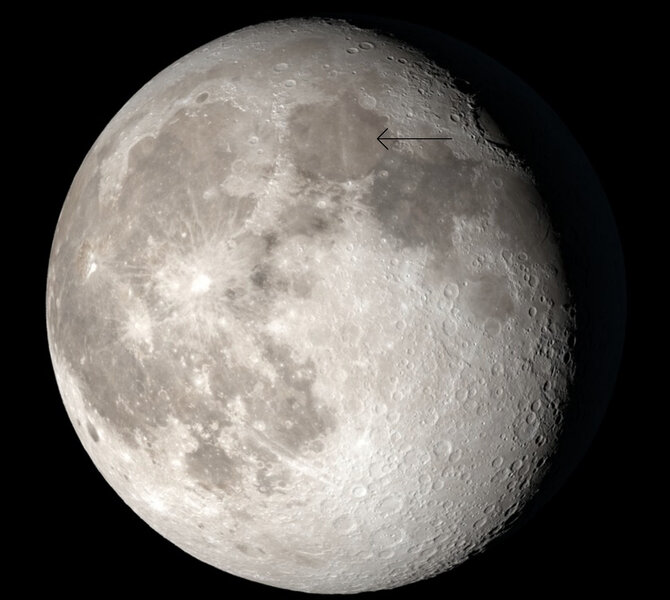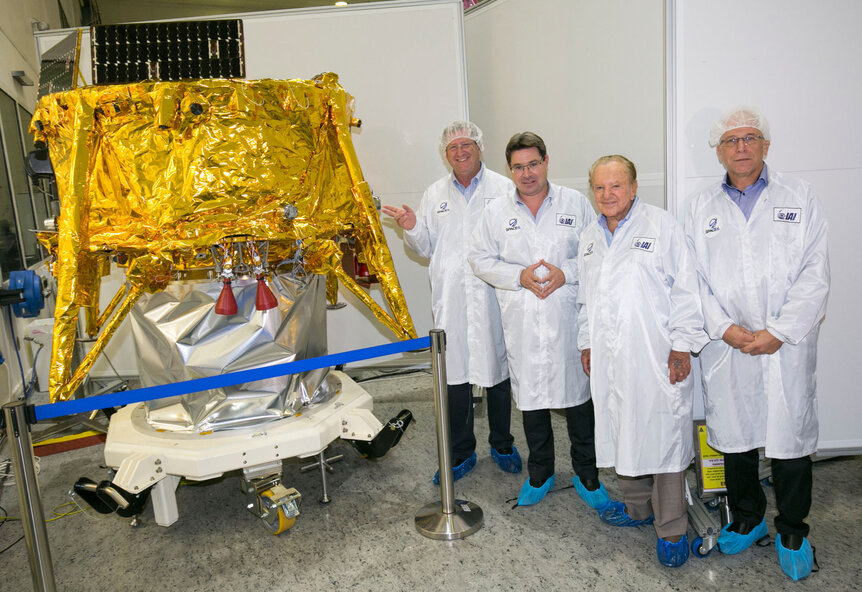Create a free profile to get unlimited access to exclusive videos, sweepstakes, and more!
Shalom, Moon: Israeli non-profit SpaceIL plans to launch a Moon lander in February

You probably haven't heard of SpaceIL, but trust me, you're about to hear a lot about them.
It's an Israeli non-governmental non-profit group that was participating in the Google Lunar X Prize competition, aimed at getting a lander on the Moon, having it then move at least 500 meters across the surface, and return high-res images and video. Several dozen teams joined in the competition, but delays set everyone back far enough that the Prize was never collected; no one was able to launch before the deadline.
That, however, has not stopped SpaceIL: They plan on launching their lander on a SpaceX Falcon 9 rocket as early as February 19*.
The lander is called Beresheet (in English, though I think b'raysheet is a better transliteration; the Hebrew is בְּרֵאשִׁ֖ית), which made me chuckle when I heard it: As I recalled from Hebrew school, this is the first word in Genesis, meaning "In the beginning". Nice name for a first attempt at landing on the Moon!
The lander is about a meter high, two across, and has a mass of 600 kilograms — though a lot of that is propellant; by the time it lands on the Moon its mass will be closer to 200 kg, so it will weigh about 90 pounds in the Moon's lower gravity. It's equipped with just a few instruments: a magnetometer to measure the Moon's magnetic field, a retroreflector which can be used to reflect laser light from an orbiting spacecraft (to better nail down the location fo the lander)†, and an imaging camera. The lander is equipped with solar arrays and batteries to power it. That's all pretty good, given its budget was less than $100M US (funded via private donations). Jason Davis of The Planetary Society has a rundown of the lander details.
Once in orbit and deployed, Beresheet will use its on-board propulsion system to slowly raise its orbit away from Earth, taking about two months to approach the Moon. It'll orbit a few times, then descend into Mare Serenitatis, a large lava flood plain on the Moon's near side (easily visible to the naked eye after the Moon is about half full; it's considered to be one of the eyes of the "Man in the Moon"). Apollo 17 landed on the eastern side of Mare Serenitatis in 1972, incidentally.
Once down, it will take images and video, then use its propulsion system again to hop some hundreds of meters, thus fulfilling the X Prize challenge — there is no monetary prize any more since the deadline is passed, but the Prize has continued without the purse.
If successful, this will make Israel the fourth country to land on the Moon, after the U.S, the Soviet Union, and China (just a few weeks ago!). However, as noted earlier, this is not an official governmental mission, which means this will be the first time such a mission has soft-landed on the Moon, too.
I'll note there is not much thermal protection for the lander; it was designed to last up to three days as the Moon's surface around it heats after sunrise. While I wish it could last longer, that's not the point; getting there is.
So stay tuned. This is an exciting mission, and I'm really happy to see the Moon be the target of so many explorations.
*The Falcon 9 rocket will have quite a diverse payload at launch. Besides Beresheet, the "rideshare" payload will include an Indonesian communications satellite and an array of "smallsats," tiny satellites with limited function but which cost far less than full-sized satellites.
† Correction (Jan. 25, 2019): I had originally written that the retroreflector was going to be used for lunar ranging via laser from Earth, and that there was no thermal shielding on the lander. These were in error. I received an email from Yoav Landsman, Senior Systems Engineer for SpaceIL/Beresheet, correcting me on these. Glad to hear it! The text has been updated.






























